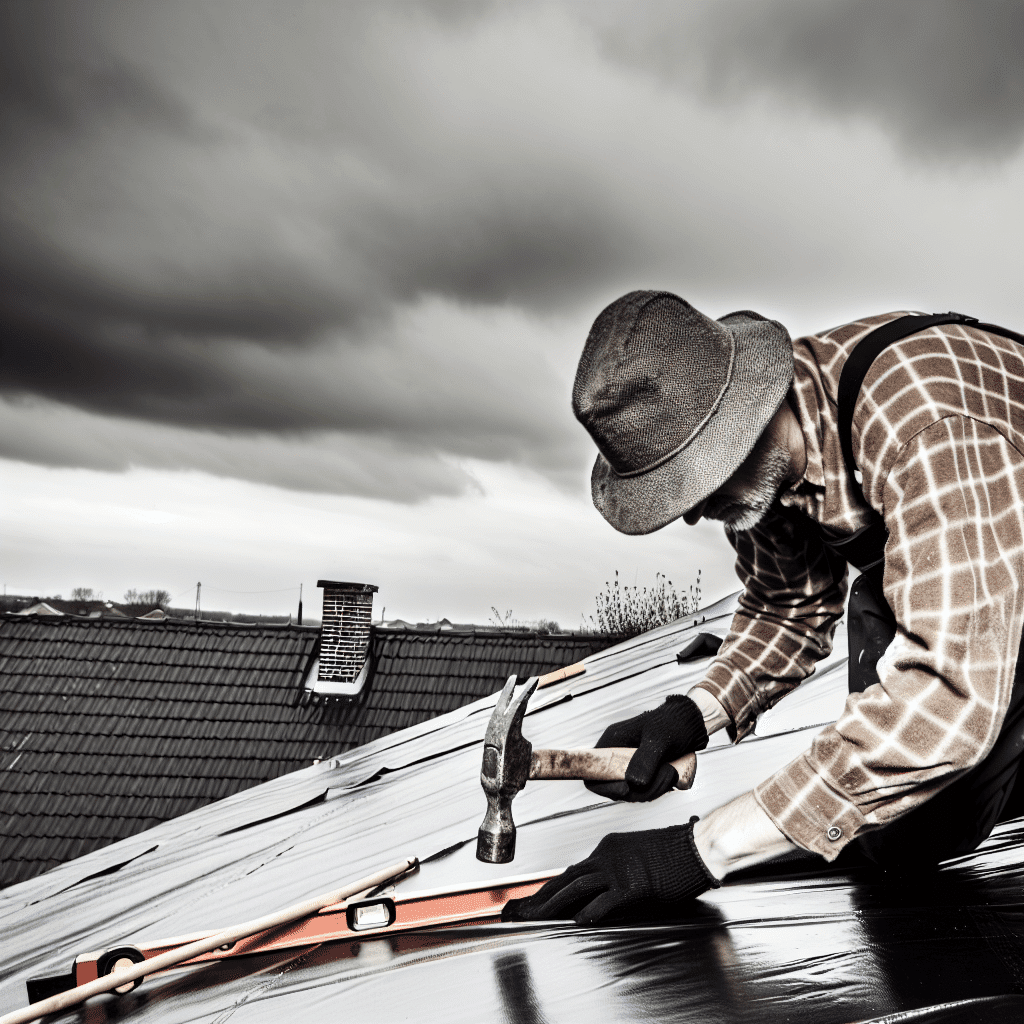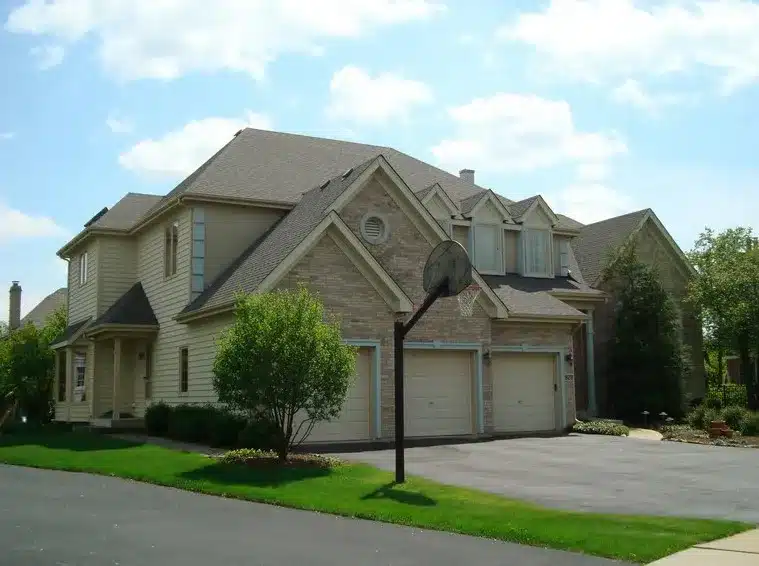• Discover effective techniques for applying roof waterproofing to protect your home from water damage
• Learn about the best materials and application methods for long-lasting roof protection
• Understand when to seek professional guidance to ensure optimal waterproofing results
Recognizing the Need for Roof Waterproofing
When was the last time you took a good look at the roof of your Downers Grove home? It’s the first line of defense against Illinois’ diverse weather challenges and understanding when it needs attention is crucial. Begin with an inspection for broken or missing shingles, which are clear indicators that water may have already found its way underneath. Additionally, be vigilant for any noticeable dip or sag in the roofing structure; this can imply trapped moisture, as well as potential decking or support issues.
The Telltale Signs of Moisture Issues
Evidence of water damage isn’t always as overt as a drip through the ceiling. Check for dark streaks or spots on the underside of your roof or walls, as these stains signify the long-term presence of moisture. Peeling paint or curling shingles near the roofline suggests that water is seeping underneath and affecting your home’s protective barriers. Moreover, ensure to look out for moss and algae, whose presence can both indicate and accelerate the need for a thorough waterproofing treatment.
Preparing for Effective Waterproofing
Before even thinking about applying sealant, there’s a critical need for a clean, smooth surface. Debris and dirt accumulation can not only obscure further damage but also prevent your waterproofing measures from adhering as effectively as they should. While cleaning, don’t ignore the gutters; clogged or damaged gutters contribute significantly to water risks. After they’re clear, any old caulk or sealant showing signs of wear should be stripped to give way for a fresh, reliable layer in your waterproofing pursuit.
Securing the Roof’s Shield
Timely repairs can save a homeowner from the inconvenience and costs associated with water damage. As you examine the integrity of your roof’s joints, consider the critical areas where different surfaces converge, as these are prime sites for potential leaks and water intrusion. Using a high-quality sealant is imperative to ensure that these junctions are well-protected against the harsh elements of Downers Grove. Patching up minor issues immediately can extend the life of your roof significantly, safeguarding your home’s interior from water-related damages.
A Foundation of Protection
The selection of roofing materials can significantly impact the longevity and efficacy of your waterproofing efforts. In choosing materials that align with the local climate’s demands, you play a pivotal role in establishing a durable barrier against the weather. Roofing options tailored for Downers Grove’s conditions are available at Owen Enterprises Inc, where expertise meets quality. An investment in the right materials not only secures your roof but also enhances the overall value and safety of your property.
Step 1: Inspect Your Roof for Any Signs of Damage
Start by examining the condition of your roof thoroughly. Look for broken or missing tiles, signs of wear, or any areas that seem vulnerable to water penetration.
Step 2: Clean the Roof Surface
Before applying any waterproofing, clean the roof’s surface. Remove debris, dirt, and any growths like moss or algae that could prevent a waterproof sealant from adhering correctly.
Step 3: Repair and Seal Roof Joints
Check all the joints on your roof, including where different surfaces meet, around chimneys or vent pipes. Use a suitable sealant to close gaps and secure these critical junctions.
Step 4: Choose the Right Waterproofing Material
Select waterproofing material suitable for your roof type and the local climate in Downers Grove, IL. Options include liquid membranes, asphalt coatings, or rubberized sheets.
Step 5: Apply Waterproofing to the Full Surface
Apply your selected waterproofing material across the entire roof surface. Ensure even coverage without leaving gaps or thin spots vulnerable to moisture.
Step 6: Focus on Roof Features
Pay special attention to waterproofing around roof features such as vents, skylights, and flashing. These areas are often susceptible to leaks and require careful application.
Step 7: Allow Time for Curing
After application, give your waterproofing material enough time to cure fully. Check the manufacturer’s guidelines for the proper curing time and conditions to ensure optimal performance.
Step 8: Conduct a Water Test and Maintain Regularly
After the waterproofing has cured, conduct a water test to check for leaks. Thereafter, schedule periodic inspections to maintain the integrity of your roof’s waterproofing, keeping an eye on the Downers Grove seasons for the best maintenance times.
Common Mistakes to Avoid in Roof Waterproofing
When undertaking the task of waterproofing your roof, it’s crucial to be mindful of pitfalls that could compromise the efficacy of your efforts. Even with a clear guide, mistakes can occur, often borne from inexperience or haste. It’s these errors that can lead to the need for costly repairs down the line, so understanding what frequently goes wrong is the first step toward prevention.
Mistake 1: Neglecting Thorough Inspection
Skipping a meticulous inspection before waterproofing can leave existing issues unresolved. Forgetting to address underlying structural problems or pre-existing leaks means you’re merely covering up symptoms, not curing the ailment. A well-performed inspection highlights areas needing immediate repair that, if unnoticed, could lead to substantial water damage in the future.
Mistake 2: Inadequate Cleaning
A common oversight is failing to clean the roof adequately before applying a waterproof coating. Dirt, moss, or debris not only hinders the adhesion of waterproofing materials but can also conceal damage. By guaranteeing a pristine surface, you ensure the waterproofing material bonds effectively, providing lasting protection.
Mistake 3: Improper Use of Sealants
Utilizing the wrong sealant or applying it incorrectly can cause more harm than good. Sealants vary in composition and are designed for specific conditions and roof types; using an unsuitable product can result in a failed seal. When sealing, ensure that it fully cures and properly adheres, forming a watertight barrier at all vulnerable joints and fixtures.
Mistake 4: Choosing the Wrong Waterproofing Material
Selecting inappropriate waterproofing material for your roof’s design or for Downers Grove’s environmental conditions can lead to premature deterioration. Research and consult with professionals to find a product that can withstand local weather patterns and is compatible with your roof. The right choice saves you time and resources in the long run by minimizing the need for repairs and reapplications.
Mistake 5: Uneven Application
An uneven application of waterproofing material will leave parts of your roof vulnerable to water entry. Ensure you cover every inch of the roof, with particular attention to valleys, edges, and any protrusions like vents or skylights. Even coverage is the key to preventing leaks and extending the lifespan of your roofing system.
Mistake 6: Rushing the Curing Process
Impatience during the curing process can nullify all the hard work put into applying the waterproofing material. Follow the manufacturer’s recommended curing times and conditions to ensure maximum effectiveness. Rushing this step can lead to a weakened defensive layer that’s more susceptible to damage and leaks.
Mistake 7: Failing to Conduct a Water Test
After concluding the waterproofing process, bypassing the water test is a gamble. This essential step verifies the integrity of your work, ensuring there are no weak spots. By confirming the absence of leaks, you can trust your roof will stand firm against the test of precipitation and time.
Mistake 8: Lax Maintenance
Finally, forgoing regular inspections post-waterproofing means small problems can develop into big ones. Schedule routine checks, especially after extreme weather events, to address any issues promptly. Ongoing vigilance will prolong the effects of your waterproofing and keep your Downers Grove home dry for years to come.
Ensuring Even Coverage for Maximum Protection
Proper application of the waterproofing material is key to avoiding future leaks. It’s essential to cover the roof without leaving any gaps that could compromise the waterproofing integrity. As you apply the sealant, move systematically, ensuring that every square inch is coated, forming an impenetrable barrier against water ingress.
Maintaining Your Waterproofing Efforts
After applying the waterproofing, it’s crucial to allow the material to cure fully. This process could take hours or days, depending on the product and environmental conditions. Once cured, it’s wise to perform routine inspections, especially after extreme weather, to maintain the roof’s waterproofing; visit the roof systems page to learn more about maintenance services.






